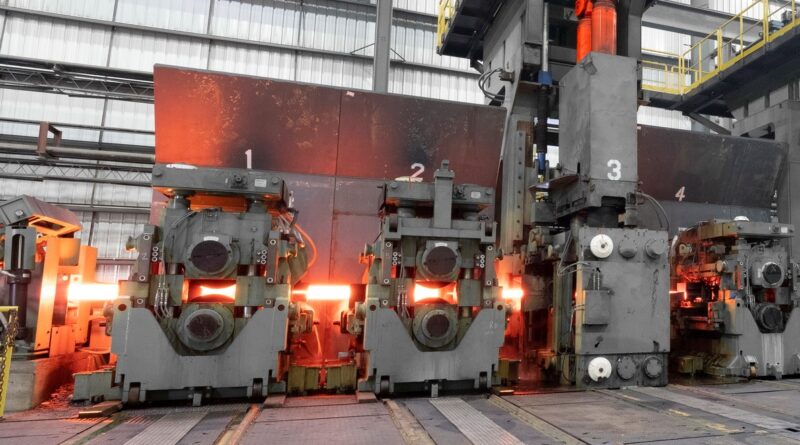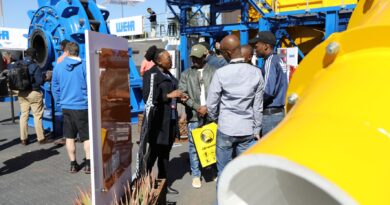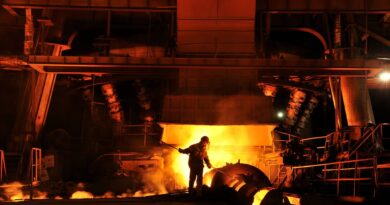Steel demand in developing economies will grow in 2023 and 2024
Steel demand dynamics in emerging and developing economies continue to diverge, with developing Asia excluding China remaining resilient to global headwinds. After falling by 0.6% in 2022, steel demand in emerging and developing economies excluding China will show growth of 4.1% in 2023 and 4.8% in 2024.
India
The Indian economy remains stable against the pressure of the high interest rate environment, and India’s steel demand is expected to continue its high growth momentum. Growth in India’s construction sector is driven by government spending on infrastructure and recovery in private investment. Infrastructure investment will also support the capital goods sector growth. Healthy growth momentum will continue in automotive. The consumer durables sector is the only sector that is underperforming due to higher inflation/interest rates that constrain discretionary spending. However, it will improve in 2024 with festive season spending and progress in the Production Linked Investment (PLI) Schemes.
After growth of 9.3% in 2022, steel demand is expected to show healthy growth of 8.6% in 2023 and 7.7% in 2024.
ASEAN
The ASEAN steel demand will be driven by domestic demand and infrastructure investment despite inflation and deteriorating external conditions. However, the region’s export has slowed considerably, and it is denting its manufacturing performances. Vietnam is particularly affected by the deteriorating global trade environment. The political situation is causing delays in infrastructure investment in some countries.
After falling by 0.2% in 2022, ASEAN steel demand is expected to increase by 3.8% in 2023 and then by 5.2% in 2024.
Other Europe
Turkish steel demand is expected to record very high growth of 19.0% in 2023 and to continue to grow in 2024. Steel demand will benefit from the earthquake-related construction activities and the abandonment of its unconventional monetary policy that drove foreign investment out of the country.
After falling by 2.5% in 2022, steel demand in Other Europe is expected to increase by 14.9% in 2023 and by 5.1% in 2024.
Middle East and North Africa
The MENA region is expected to see steel demand contracting this year as steel demand in both the GCC and North Africa contracts.
After a strong recovery in 2022, the GCC will see its steel demand decline in 2023 due to sluggish construction activities in Saudi Arabia and Qatar. However, in 2024, steel demand will show a healthy rebound with an increasing momentum of mega projects and pent-up demand for housing. The UAE is expected to perform better among the GCC countries thanks to its booming real estate sector and investment in non-oil sectors.
Egypt’s steel demand continues to suffer from the impact of the Russia-Ukraine war. High interest rates, severe currency depreciation, limited access to foreign currency, and higher production costs are leading to the suspension of mega projects. The situation is expected to improve slightly in 2024 as inflation is expected to peak in the second half of 2023.
Following growth of 9.4% in 2022, total steel demand in the MENA region is forecast to decrease by 3.5% in 2023 and increase by 3.5% in 2024.
Russia and other CIS + Ukraine
After performing better than expected in 2022, with only a minor contraction in GDP thanks to massive government stimulus measures, the Russian economy is expected to record a small positive growth in 2023, helped by oil revenues and adjustments of the economy to the sanctions. Steel demand is also expected to recover moderately in 2023. But in 2024, Russia will see a deteriorating economic environment with currency depreciation, labour shortages, and supply chain disruptions. Industrial production will deteriorate due to reduced access to modern technologies and continuous restrictions on the import of spare parts.
Despite the continuation of the war, the steel use situation in Ukraine is for stabilisation and improvement. Since March 2023, steel using sectors have shown an upward trend amid a low base of comparison. Construction activities are helped by relocation of businesses, construction of housing for internally displaced persons, restoration of damaged infrastructure, and development of new logistics routes.
Forecasts for 2023-2024 have been revised upwards for both Russia and Ukraine compared to the April 2023 outlook, but significant revisions are possible depending on the course of the war.
Latin America
Latin America was ahead of other countries in raising interest rates to tackle inflation and some countries have already started to loosen monetary policy. However, this is causing the economy to slow down, and the steel demand outlook has worsened compared to the April outlook, with many countries showing contraction in 2023. Construction will be growing marginally in 2023 and 2024. There are multiple economic and political downside risk factors such as China’s slowdown, high debts and financial market volatility, and unstable and uncertain political situations.
Steel demand in Latin America is expected to increase by 1.4% in 2023 and then grow by 2.1 % in 2024 after falling by 8.3% in 2022.
Brazil’s steel demand is expected to contract again this year with sluggish manufacturing and a weakening real estate sector. Government investment along the newly launched GDP acceleration programme is expected to boost construction in the coming years and steel demand is expected to recover moderately in 2024.
The situation is brighter in Mexico, where the economy is supported by strong consumer sentiments, nearshoring activities, and election-related government spending. Steel-intensive manufacturing sectors are in positive territory, especially the auto sector. With a contracting residential sector, cconstruction activities are less vigorous, but the nearshoring phenomenon and public investment are supporting construction.




